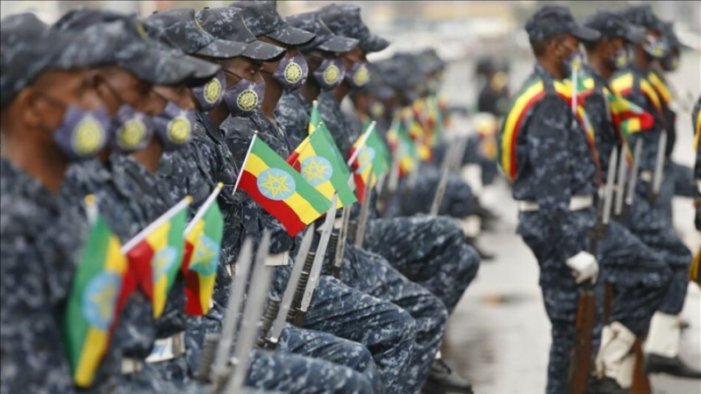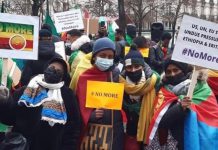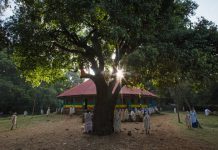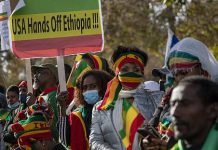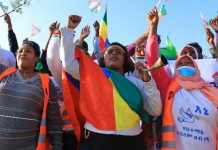Africa-Press Ethiopia
On November 4, Ethiopian prime minister Abiy Ahmed launched a military attack on the region of Tigray, in the north of the country, near the Eritrean border. The attack was in retaliation for an assault on an Ethiopian army base, allegedly carried out by Tigray’s ruling party, the Tigray People’s Liberation Front (TPLF). Since then, Tigray, home to 6 million people, has suffered an Internet and communications blackout, making it difficult to know the extent of the fighting and how the population is faring. What is certain is that at least 1 million people have fled their homes. An estimated 50,000 refugees are now living in camps across the border in Sudan.
Abiy declared victory over the TPLF after conquering Mekelle, the capital of Tigray and the TPLF’s stronghold. Fighting continues, however, between local and national forces throughout Tigray.
The conflict is being driven primarily by ethnic tensions, territorial disputes, and contests over power, and less so by competing development models, according to Fernando Duclós, a journalist who writes under the name Periodistán. Power in Ethiopia was “historically in the hands of the Tigrinya,” Duclós says, referring to the region’s predominant ethnic group. “Today it has changed hands, and [the Tigrinya leaders] do not tolerate it.” In Ethiopia this means a fight over who rules the country’s economy from above.
The crisis in Ethiopia threatens not only to harm the country’s population of 110 million people but also to fragment the country, which would have destabilizing repercussions throughout the Horn of Africa. It could create further economic crises and new migrations of refugees, and lead to even greater armed clashes among tribal, ethnic, and religious groups.
The Roots of a Historical Conflict
To understand these tensions we must review some recent history. In 1974 Ethiopian emperor Haile Selassie was overthrown in a military coup, after intense mobilizations driven by economic crisis and severe droughts. After the coup, power was taken by a kind of “socialist” military junta called the Derg. The Derg was linked to the Soviet Union during the Cold War and maintained several of the Selassie government’s repressive features. There began an extensive civil war that lasted until 1991.
The fall of the USSR left the Derg weakened, and it was militarily overthrown by the Ethiopian People’s Revolutionary Democratic Front (EPRDF), a coalition of armed parties, each representing a ethnic and regional base. This coalition, led by TPLF, became the basis of the subsequent government by creating an alliance between the country’s main ethnic and political forces, some born on the eve of the Selassie’s fall in 1974: the Oromo People’s Democratic Organization, the Amhara National Democratic Movement, and the Southern Ethiopian People’s Democratic Front.
From this coalition was born the Federal Democratic Republic of Ethiopia, based on the distribution of power among these parties. The TPLF dominated the coalition for years, presiding over a system of ethnic federalism by granting autonomy to all the nations and peoples that form part of the newly founded republic. Each has the right to secede from the federation whenever it sees fit — a right that has, however, never been respected.
Ethiopia’s political and social fragmentation is evident, being divided into 82 ethnic groups and tribes, as well as autonomous armed groups and paramilitaries. The TPLF’s political strategy was to form an ethnic federal state to provide autonomy to each region by dividing the territory into nine states. This allowed the rulers of Tigray to achieve influence over the rest of the country, even though the Tigrayan ethnic group composes only 6 percent of the national population, while the Oromo and Amhara together compose 60 percent.
Each state is dominated by a central ethnic group, and those who are not part of the dominant group are denied civil rights. Within this framework, Duclós says, the federal constitution of 1995 was passed, and thereafter “the regional feeling became stronger than the national one. Many people, being of a minority ethnic group, came to feel foreign in their own country.”
The strategic line of the TPLF was supported by the entire EPRDF coalition, which dominated the parliament after the first “democratic” elections in 1995. The EPRDF was, in fact, a one-party regime that persecuted the political opposition. One of the central government’s first measures was to establish relations with the IMF and implement the necessary reforms to enter the world market as quickly as possible.
In those years, Eritrea became independent (1993). It was a commercial ally of Ethiopia, but by 1998, powerful droughts boosted a bloody military conflict between the two countries that killed about 100,000 people until the signing of peace accords in 2018.
The TPLF played a central role in leading the government for many years. It was linked to the country’s increasing poverty and accused of corruption, and it controlled most of the country’s resources. It was, moreover, responsible for much of the country’s political, ideological, and ethnic repression.
Ethiopian Game of Thrones
By 2018, Prime Minister Hailemariam Desalegn was forced to resign after three years of demonstrations and tensions. The parliament voted in a new prime minister, Abiy, the first president of the Oromo ethnic group and a former officer in the military intelligence services.
This was seen as an opportunity for the United States to disrupt China’s advance in Africa. The TPLF has built strong ties with the Asian giant based on a development model that includes Beijing as a major trading partner. In this regard, it is unsurprising that U.S. diplomats played a role in the events surrounding Abiy’s appointment.
Abiy moved forward with democratic and political reforms to consolidate power and quell the rebellion by the Oromo and Amhara, ethnic groups that together represent two-thirds of the population. These measures ranged from greater rights for women to the legalization of political parties and freedom of the press, in addition to liberalizing the Ethiopian market and integrating the country into the WTO. The signing of peace accords with Eritrea earned him international sympathy for ending one of the longest conflicts of the century, and he was awarded the Nobel Peace Prize in 2019. He was, however, criticized in Tigray for having forged an “unprincipled” friendship. Among other international achievements, he contributed to the rapprochement between the countries and to the advances in peace between insurgent groups in Sudan and South Sudan. On the economic front, his government made progress with a privatization plan promoted by the United States.
It also achieved enormous popularity within the country under the slogan “One Love, One Ethiopia,” calming protests and achieving sustained economic growth of 7.7 percent until the beginning of the pandemic. His rhetoric is based on national unity and reconciliation among the tribes, highlighting that hundreds of political prisoners have been released.
Yet the “glorious past” that Abiy constantly appeals to was not defined by “unity” but by controlling and oppressing the people since the formation of the modern Ethiopian state. There has been no moment in Ethiopian history when the country’s peoples were fully and voluntarily united; they were simply controlled by centralized authorities in Addis Ababa who ignored cultural and social differences. This is why the opposition is trying to become the new “emperor” of Ethiopia and once again wage a war against “diversity, democracy, and freedom” in the name of national unity.

